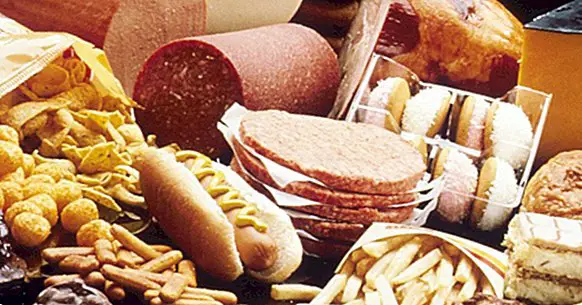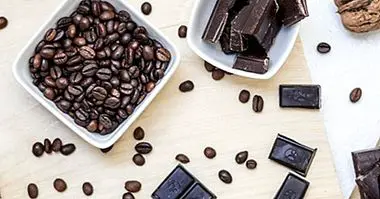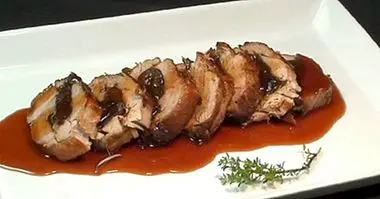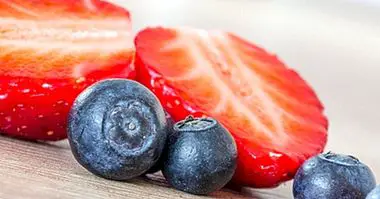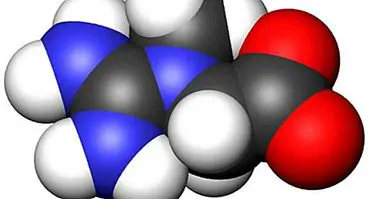How does sugar and fat work in our brain?
In response to a WHO press release of last October 2016, lThe worldwide prevalence of obesity more than doubled between 1980 and 2014 , 11% of men and 15% of women (more than half a billion adults) were obese in that last year.
This figure is not worrisome just because it means for our body to store large amounts of fluids and fats; in addition, obesity is related to addiction and certain mental disorders .
- Related article: "Compulsive overeating: abuse and addiction to food"
A brain oriented towards fat
Let's do a little experiment. As you read the following list of foods, imagine them as vividly and clearly as possible:
- Chocolate donuts
- Cream buns
- Ham and cheese pizza.
- Hamburger overflowing with sauce.
- Refreshment with ice.
- Chocolate milkshake with whipped cream.
Does your mouth water when you think of those foods? That powerful flavor, the sweetness of a glaze, the salty taste of fried smoked bacon ... Do not panic, you are within the norm.
And it is that multiple studies show that human beings, by genetics, we have a preference for fats and sugars . In fact, that preference turned out to be an evolutionary advantage for our ancestors by allowing the accumulation of fat in their bodies, ensuring survival in stages in which food was scarce.
Times change: overfeeding in fats and sugars
That these foods had an especially pleasant taste was not a coincidence : indicated the presence of said elements. The organoleptic characteristics that precede them: the smell, texture, flavor ... were a great attention call for their consumption, as it happens today.
However, there is unanimity that currently the current consumption of sugars and fats is excessive in relation to the current way of life. We are fully aware that an increase in the intake of these two foods linked to the prevailing sedentary lifestyle it does not do our health a favor . And, surprisingly, it is difficult for many people to balance that intake despite the incidence it presents in the development of multiple diseases such as diabetes, hypertension, hypercholesterolemia or obesity.
So, if in the long run it is so harmful for us to eat fats and sugars ... What makes us continue in this line? The answer is in our brain .
The Cerebral Reward Circuit
Also known as the Hedonic or Pleasure Circuit , is involved in motivation and the feeling of pleasure. It is composed of:
- The ventral tegmental area : It constitutes the central link of the reward circuit, since its neurons are connected to numerous regions of the brain. Carry out the release of dopamine.
- The nucleus accumbrens: Increases brain dopamine levels
- The prefrontal cortex : directs the planning of cognitively complex behaviors, the expression of the personality, the decision-making processes and the adequacy of social behavior appropriate at all times (among many others)
- The pituitary: It releases beta endorphins and oxytocin, which relieve pain, regulates emotions such as love and positive ties, among other functions.
What elements activate the brain reward circuit? Among others, they emphasize the love, the tobacco, the cocaine, marijuana, fats and sugars. But let's focus on these last two.
The psychological explanation of obesity
The process begins with the intake of foods high in sugar or fat, which stimulates the segregation of oxytocin and dopamine from our brain, which provides feelings of joy, well-being, pleasure and avoidance of discomfort, since dopamine participates in a natural in functions such as food or sex.
Thus, after having ingested the donuts that we imagined above, our body feels well and the known hedonic pleasure is produced, which constitutes a positive reinforcement on the behavior "eating donuts" (which we will do again). But dopamine (neurotransmitter) and oxytocin (hormone) they have a limited life time, and to their disappearance, there remain the contrary feelings of well-being that human beings long for, thus passing from anxiety to sadness. The intake begins again and the cycle repeats itself.
- Maybe you're interested: "Types of hormones and their functions in the human body"
The emergence of dependence on food
A phenomenon to take into account in the operation of this circuit, is that dopamine and oxytocin each time disappear before the game and, in addition, the doses tend to decrease, for which, if the same level of excitation is desired as at the beginning , the amount or frequency of the food intake must be increased, turning us, finally, addicted.
This process can be related to the development of obesity, diabetes and the recently incorporated to the DSMV binge eating disorder.
On the other hand, there are data that the uncontrolled intake of sugars and fats have a higher prevalence in individuals who suffer from obesity compared to normal weight individuals, but specifically in the obese group, it occurs more frequently in depressed and / or anxious individuals .
Do fats and sugars act as an escape to stressful situations? The research suggests that, indeed, the moments of stress and situations that generate negative feelings lead these individuals to make high intakes in fats and sugars to feel temporarily well, more after reducing the level of dopamine, they feel anxious and guilty again for the lack of control shown or for having missed their dietary guidelines.
And you Would you be able to reduce the consumption of processed sugar and saturated fats in your day to day?
To illustrate the reading public, I share a short documentary about what happens to the body when you live a month without consuming sugar (you can subtitle it into Spanish).

